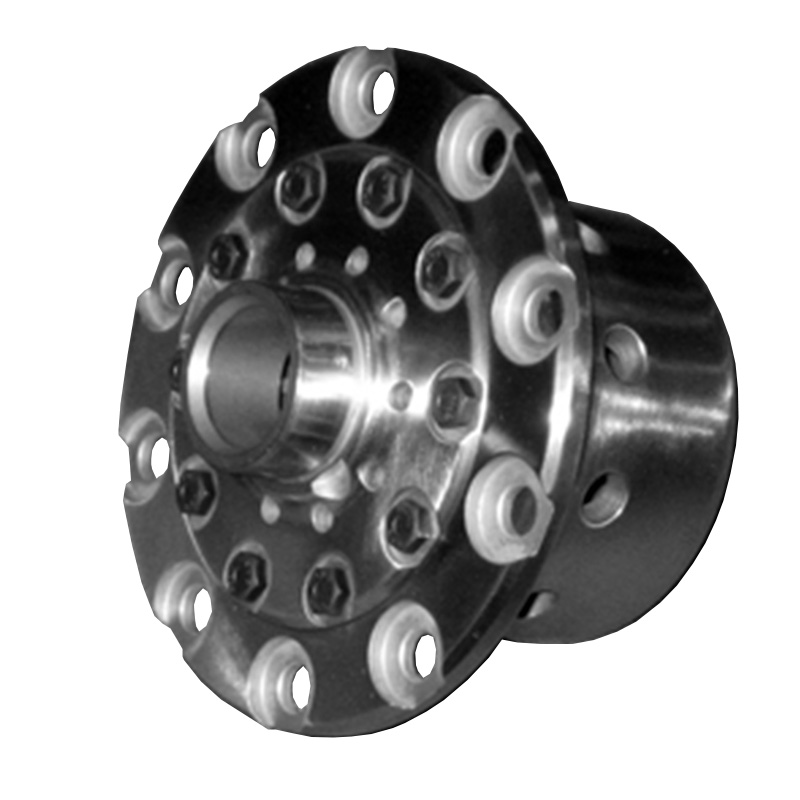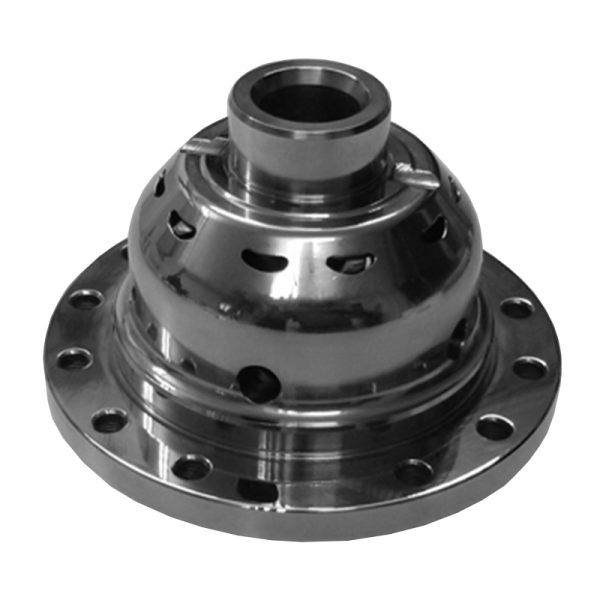SUZUKI JIMNY FRONT SELF-LOCKING DIFFERENTIAL
This self-locking differential can be used on the front axle of the Suzuki Jimny built from 2003 to 2018 (crown with 10 screws); it is not compatible with the new model of the Jimny (2019> ).
This device consists of a differential with helical gears: it has the characteristic of being able to lock progressively up to 40% in tension and 30% in release.
How does it work and why is the self-locking differential useful?
First of all we consider the operation of the normal standard differential of our off-road vehicle.

Differential is a device able to share the torque coming from the gearbox in two exactly identical halves, irrespective of wheel speed difference on the same axle. So, as you can see in the image, said 100 (arbitrary units) the torque coming to the differential, every wheel will receive a torque of 50.
There is another important factor to be taken into account: the grip of the tyres to the ground. In fact, the torque can be "unloaded" on the ground up to the limit of adhesion of the wheel; this limit is therefore proportional to the fraction of load acting on the wheel and to the coefficient of adhesion, which depends mainly on the consistency and conditions of the ground.
Therefore, if one of the two wheels of the front axle ends up in a more reduced grip area, the ground torque that can be discharged from the wheel in question is reduced, since the wheel itself reaches the slip condition. For the property of the above differential, which is to be a mechanism that divides the input torque in equal parts, we will have the same torque value on the other wheel that would maintain a good grip.
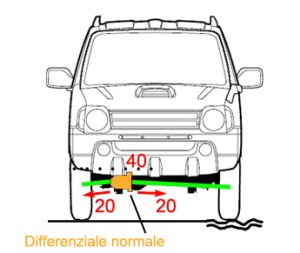
As you can see in the previous picture, said 20 the slipping limit of front left wheel, right wheel cannot do nothing better than unload 20 to the ground. So whole traction of front driveline reduces to 40, significantly less than 100 of previous example.
If we mount the Prometeo self-locking differential instead of the normal differential, the traction in these cases improves significantly. Let’s see how and how much.
First of all, in condition of good and uniform grip, self-locking differential behaves as an open differential, as shown in the following picture.
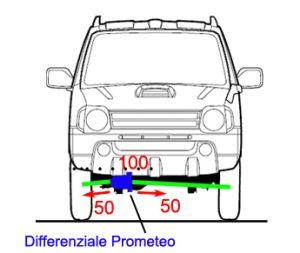
However, if one wheel loses grip and starts to slip, the other one has a greater torque of about 40% of the total torque.
Therefore, the total torque discharged to the ground by the front axle is higher than that discharged to the ground by a common differential. Following picture is very explanatory of the way of working.

The 40% blocking percentage is the best compromise found through numerous tests performed on different funds. Let us not forget that an excessive percentage of locking would have increased the risk of breakage of the front axles in case of manoeuvring errors. On the other hand, a too small locking rate would have reduced self-locking differential advantages, making it substantially unuseful.
With the Prometeo self-locking differential, you can finally take advantage of the front axle traction on off-road routes with an automatic and undemanding device.
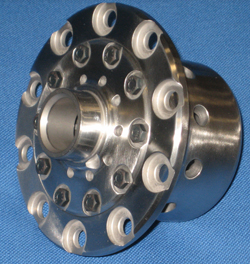
The PROMETEO self-locking differential for the front of the Suzuki Jimny

Visual comparison between the standard differential (left) and the Prometheus self-locking differential (right)
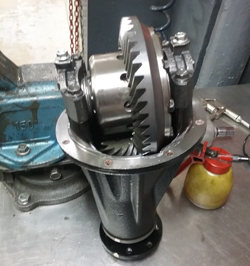
The self-locking differential mounted on the front "pear"

Differential helical gears

